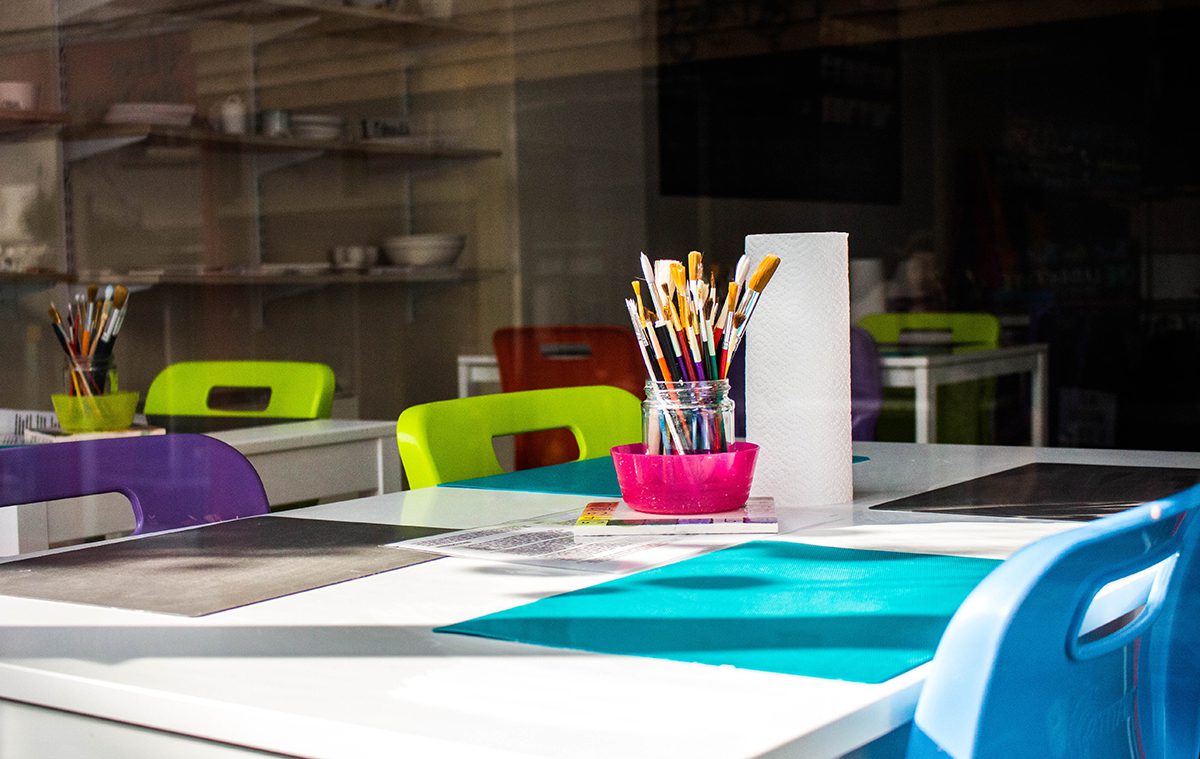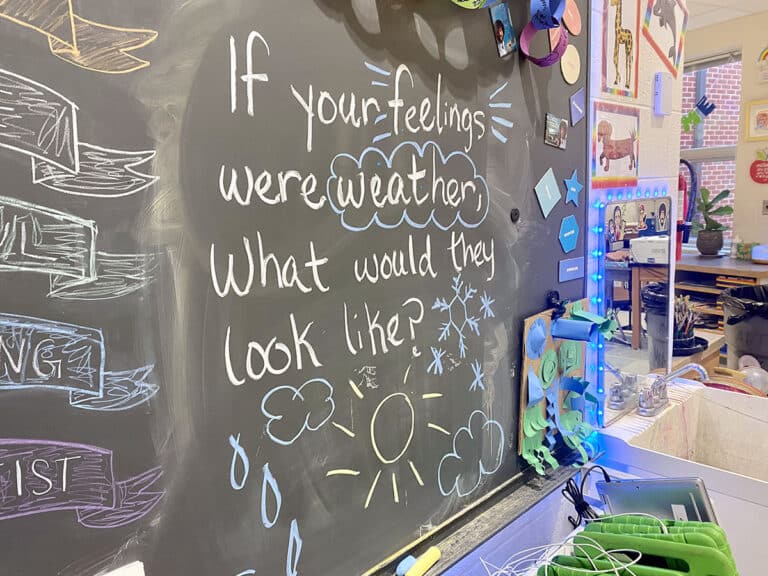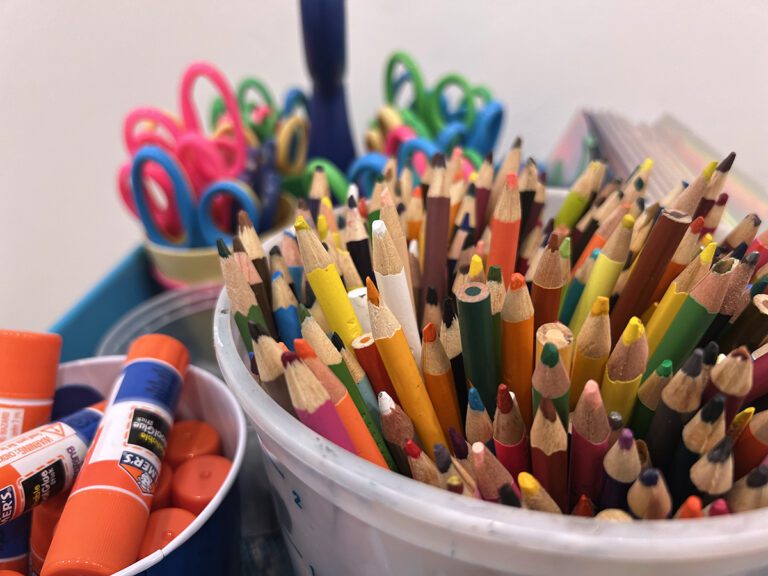Focusing on social-emotional learning (SEL) can provide opportunities for self-expression and produce beautiful works of art. However, SEL isn’t just about providing students with conversations or creative prompts. Creating a safe space where students can explore their experiences and learn about others starts with intentional classroom management practices. There is no better time than the beginning of the school year to set those expectations.
Let’s consider the following six classroom management strategies that foster SEL in the art room.
What Is Social-Emotional Learning (SEL)?
SEL is an umbrella term that unites broader conversations about student well-being and our role as educators. According to CASEL, the Collaborative for Academic, Social, and Emotional Learning, SEL is the process through which students “… develop healthy identities, manage emotions, achieve goals, establish and maintain supportive relationships, and make responsible and caring decisions.” To learn more about the intersection of art education and SEL, check out The Art of Education University’s podcast, The Art of SEL.
1. Welcome Students Into a Safe Space.
When students enter the art room, they are entering a new space. Even though it is a new environment, they bring the weight and activity of the rest of their lives with them. For instance, you may not be aware of an incident that took place in the cafeteria. Or, earlier that morning, another educator may have reacted to them in an impactful way. The beginning of class is a time to start fresh. It is a time to welcome students into a safe space so they feel free to be creative.
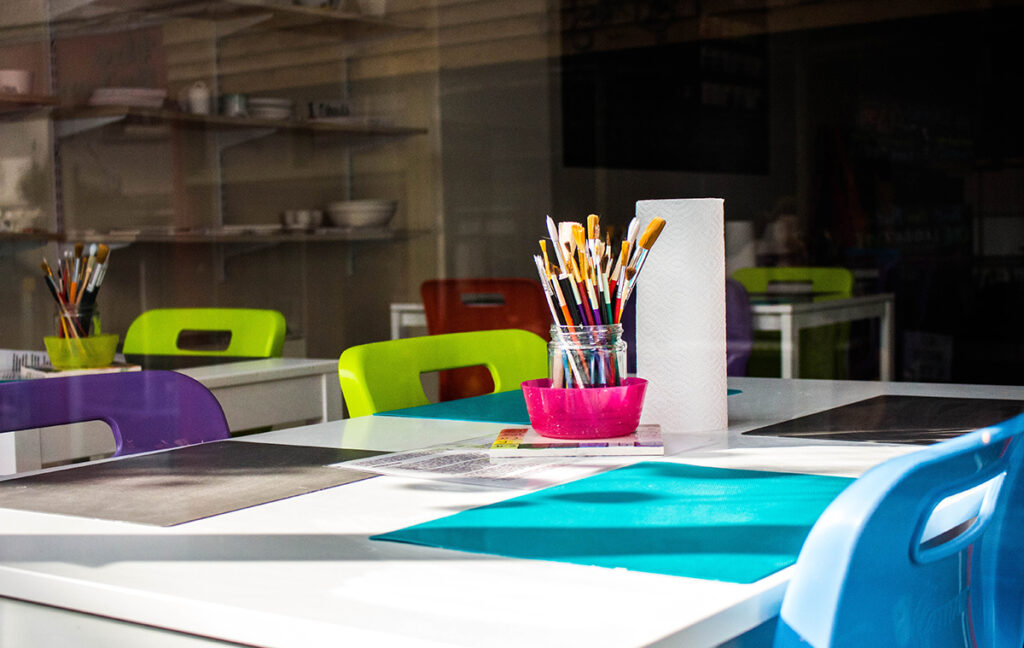
The limited amount of time we have with our students may make us frantic. Or we may start the class period spinning because we are still cleaning up after the last class. The start of each new class can be a fresh start for you too. Prioritize the first few minutes in the art room to set everyone up for success.
Here are some strategies you can implement to make your classroom more welcoming:
- Greet students by name as they enter.
Hearing our names can help us feel a sense of belonging. - Perform a well-being check-in before learning and working.
Examples include a mood meter or a chart based on the Zones of Regulation. Students can acknowledge this internally or out loud based on their comfort level. - Recite a class mantra.
Starting class by speaking together in a collective voice focuses students on what should fuel them. Periodically remind students about what your mantra means. Share why it matters to you and why you hope it is important to them. - Enforce consistent expectations for where students should go upon entering the art room.
Many students feel uneasy about the unpredictability of the art room, and consistency can help with this. Should students always report to their assigned seats first? To a carpeted area? To a demonstration table? The rest of the class may be filled with uncertainty and imagination, but starting all students with clear directions can support even the most hesitant learners.
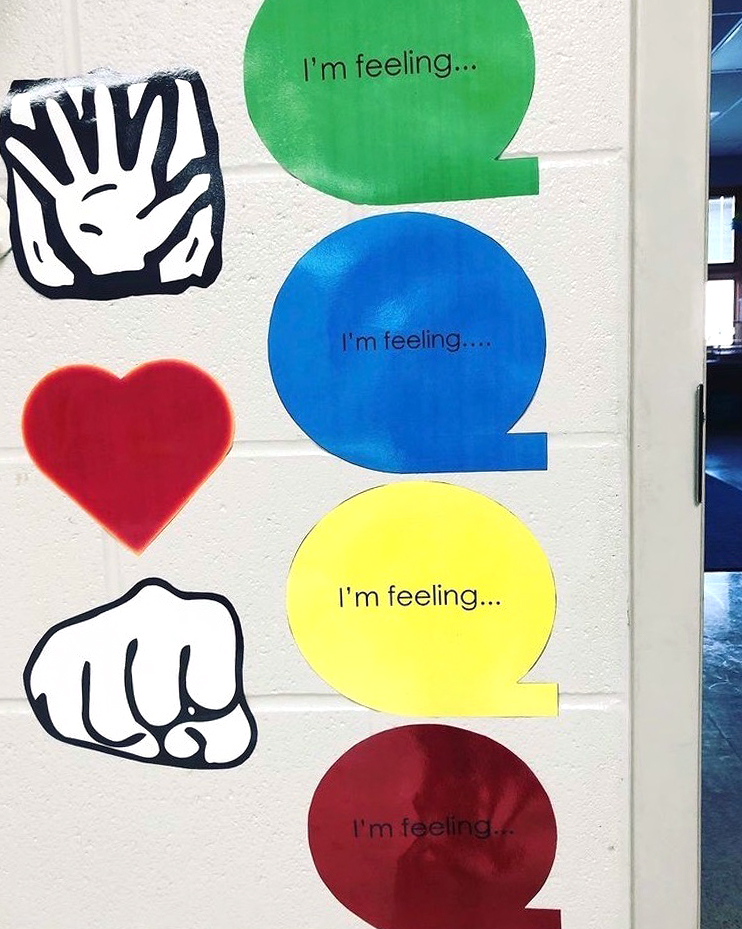
2. Empower Students to Take Charge.
When students are empowered to be active members of the classroom community, they can become more self-aware of their potential. This can lead to responsible decision-making. For example, teach students how to take care of supplies and where to put them away. This will allow students to take ownership of their experience in the art room. It will also positively impact those who enter the space after them.
Let’s take a look at some confidence-building strategies that will set your students up for success:
- Prepare students ahead of time for what is coming next.
Before students leave the art room, explain what they will be doing next class. Students will come to class with a knowledge base of the expectations. Instead of starting from scratch, they will only need simple reminders to get learning and working. - Label locations throughout the room.
Labels help students take ownership when obtaining supplies and cleaning up. It also teaches students to care about their peers who will be using these materials next. Consider using images and writing the labels in multiple languages. This will make the labels accessible for English Language Learners and younger students. - Pre-identify student jobs.
Having pre-determined and pre-assigned tasks prompts students to consider their role in the classroom. It also pushes students to consider how their actions impact others. Sweeping up paper scraps or passing out materials can promote conversations about social awareness and relationships.
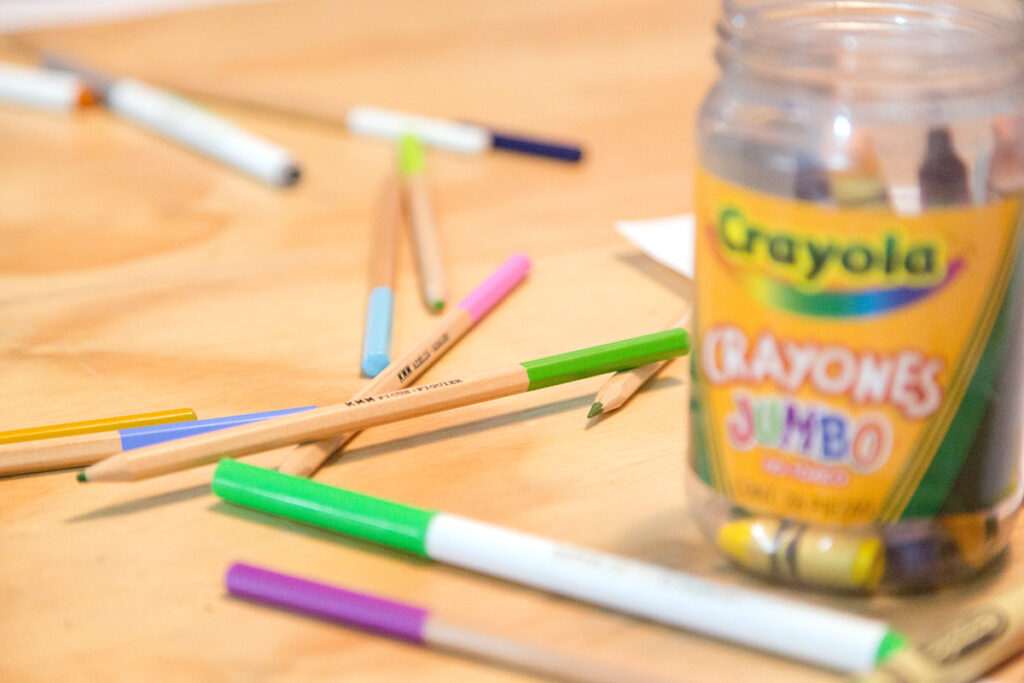
3. Model Apologies.
Apologies may seem odd to include in a discussion about classroom management, but they are an action that students need to see modeled by an adult. They need to see that it is okay to admit when something goes wrong and it is okay to be vulnerable. Clearly apologize when it is necessary and do so without excuses. When you do this, you will model self-awareness and responsible decision-making.
Looking for a good book to spark this conversation? Check out How to Apologize by David LaRochelle.
4. Recognize Student Experiences.
It is critical that we recognize the experiences of our students. This includes how their lives may be impacted by their time in the art room as well as how their lives can affect future students in the art room.

Lauren Suveges, a middle school art teacher in Florence, OR, uses her sense of humor to prompt students’ awareness of their experiences and resulting responses. When her students self-identify that they are having a “bad day,” they can request the Bad Day Cat Day. This is a goofy sweet cat figurine Lauren has available to keep a student company at their desk. Something so small, like Bad Day Cat Day, can help students identify their emotions. It can also turn their feelings and experience around in your class.
5. Check in Periodically.
If we want to know about our students, we have to ask them.
If you are looking for some strategies that invite students to share how they are doing, check out the following:
- Consult a mood meter.
In the middle of studio time, ask students to hit pause and consult a mood meter. Students identify where they are currently at with themselves and their work. This act of self-awareness is a cornerstone of SEL. It can lead to learning and mastering self-management practices. Awareness in this area may prompt students to recognize what supports they need to be successful. - Circulate the room.
Don’t wait for students to come to you. Stop by and check in while they are working. Ask them questions about their experience, their needs, and their self-management. This will help them process any challenges that show up. A lot of learning happens during the spontaneous conversations that take place during studio time. - Use Empathetic sentence starters.
Empathetic sentence starters help keep your one-on-one conversations with students focused on them. You should aim for your students and their experiences to be the focus, not you and your response. Print and reference these starters to encourage empathetic and clear communication. - Provide reflective surveys.
Giving surveys to students allows them to reflect on their experience in your classroom and your role as the teacher. With an online form, students can respond quickly and digitally. Another plus is that all the data is collected in one place. Alternatively, use a physical exit slip to gather data. Either method will provide you with student responses you can use to help modify classroom expectations and supports.
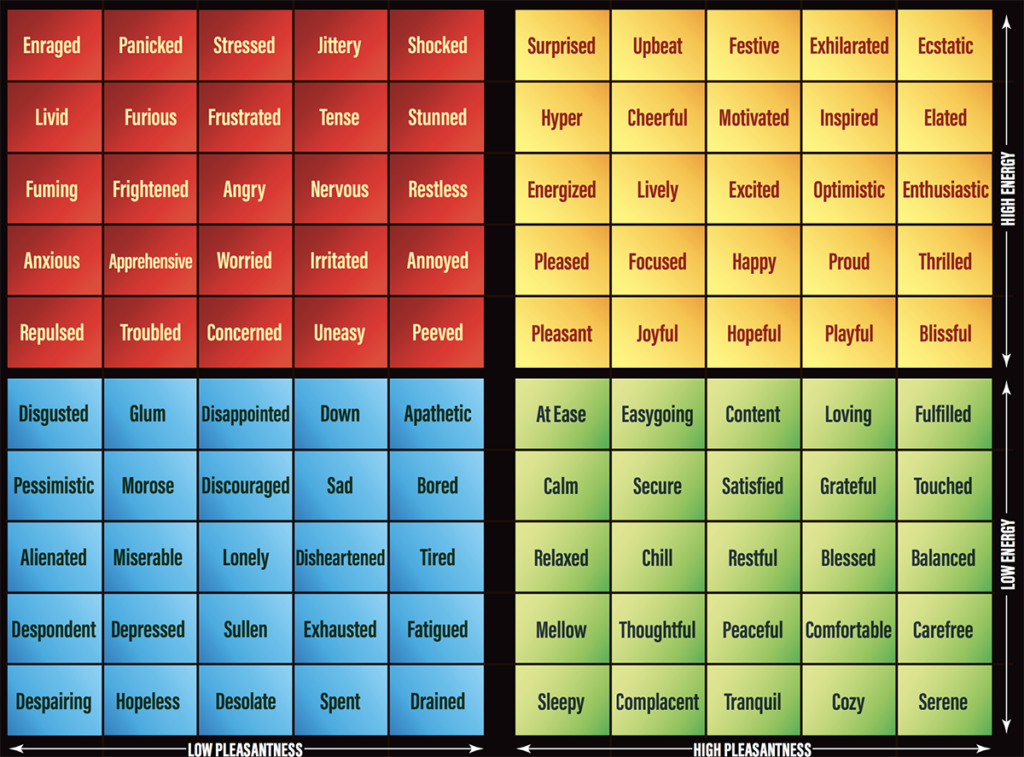
6. End on a Positive Note.
Just as welcoming students into a creative space provides opportunities for SEL, so do procedures for leaving the room. The conclusion of the class is the last thing your students will remember from your time together. Ending class positively will encourage students to look forward to the next one.
Some ideas for SEL-inspired exit activities are outlined below:
- Share favorites.
If time permits, ask students to share their favorite color or their favorite art supply as they make their way to the door. Remembering and referencing these answers in future conversations will deepen your connection with a student. - Participate in a line-up game.
Catherine Davis Hayes, an art teacher in Warwick, RI, empowers her students to take charge of the class in a line-up game. Student leaders call out prompts to get their peers to line up at the door. This game sparks relationships, leadership, and self-pride. It also provides you time to get ready for the next class. - Consult a mood meter.
This is a great one to implement if you have already established a mood meter practice in your class. Students may have entered the classroom, making note of where they were on a mood meter. As they leave, students identify their current mood. The results can give you a glimpse into their successes and challenges during that class period.
Back to school, especially post-pandemic, is hard for both students and teachers alike. Hopefully, whether you are starting from scratch as a new teacher or are looking to rethink and reimagine protocols, these six strategies gave you new ideas. Regardless of your situation and teaching experience, consider your students and their unique context. In doing so, your classroom management practices can support SEL competencies. It can also positively drive artmaking experiences and transfer valuable life skills beyond the art room walls.
What is one management strategy you already use to get to know your students?
How can you modify a current management practice to shift focus to student well-being and awareness?
How have you used a mood meter to track feelings and experiences?
Magazine articles and podcasts are opinions of professional education contributors and do not necessarily represent the position of the Art of Education University (AOEU) or its academic offerings. Contributors use terms in the way they are most often talked about in the scope of their educational experiences.
